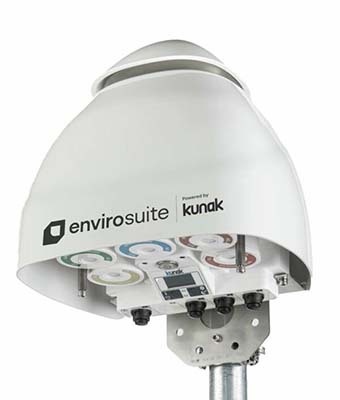
While the use of drones for landfill gas monitoring is an exciting recent technology, it doesn’t measure up to a multi-sensor network.
If you spend any significant time in landfill management circles, you have likely heard about the increased use of unmanned aerial vehicles, commonly known as drones, for the monitoring of landfill gas. While a drone equipped with a methane sensor can provide valuable information regarding active gas leaks and the identification and isolation of potential sources, unfortunately, it has limitations which should be considered before committing to deployment at a landfill.
A significant downside for drone landfill monitoring is their limited flight times. Even the best industrial drones can usually only stay in the air for less than an hour which means that they collect and provide data for a limited period of time and depending on the size of the landfill, for a limited area. The utilization of drones is also dependent on the weather as many drones cannot be flown in inclement conditions such as rain, snow or high winds. Further, when they can be flown, drones only provide a snapshot of the environmental conditions at a landfill at a given point in time. But with ever-changing landfill conditions – both in terms of weather and topography –, depending on how often drones are utilized, there is ample opportunity for missed gas leaks, which means missed opportunities for timely repair/remediation, unnecessary emission to the environment, avoidable sources of odor, and lost revenue for landfills who collect and sell gas as part of a gas-to-energy program.
Given the time restrictions for many drone monitoring programs, there is naturally going to be a gap in the data. This is not an issue for multi-sensor networks like those offered by Byers Scientific and its environmental monitoring partner, Envirosuite (EVS). Through the use of specially-designed Kunak electronic air quality monitors and the cutting-edge EVS Omnis software platform, landfill operators are able to have real-time environmental data and models at their fingertips. Armed with this critical information, operators can identify potential issues, such as gas leaks, and take instant action. Unlike drones, the EVS monitoring system is online 24/7, which means that there are no data gaps and there is no question whether costly gas leaks are going to be detected.
EVS environmental monitoring systems feature powerful tools that are ideal for solid waste operations. For example, the EVS Omnis reverse trajectory functionality offers significant impact for landfill’s battling community scrutiny and/or nuisance lawsuits who may not be the only potential source of odor in the area. Utilizing hyper-localized meteorological data (including wind speed and direction), this particular feature allows for a sixty (60) minute by minute “back track” visualization of the source of potential odor relative to the location of the odor complaint.
When it comes to finding and addressing gas leaks, time is money and the EVS environmental monitoring services offered by Byers Scientific save landfills both. While drones are great for a bird’s-eye view of a landfill’s operations at any given time, when it comes to comprehensive environmental monitoring and gas leak detection, it simply isn’t a flight worth taking.
To learn more about the Byers Scientific and Envirosuite strategic partnership and how their landfill environmental monitoring solutions may be right for you, please click here.

